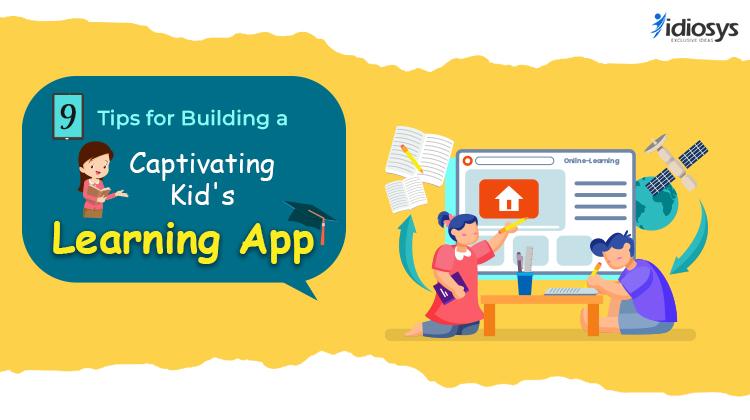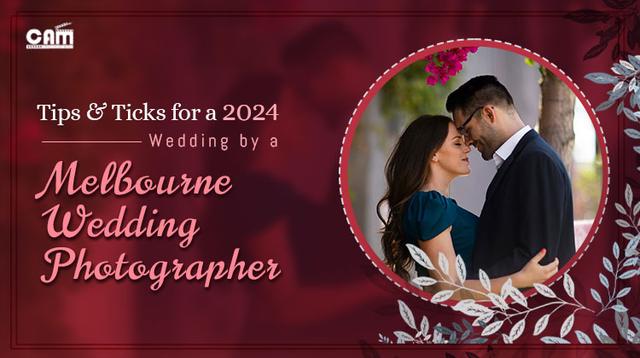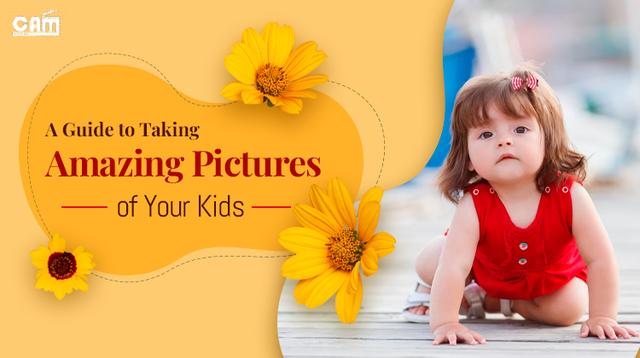
9 TIPS FOR BUILDING A CAPTIVATING KIDS' LEARNING APP
Nowadays, technology is everywhere, and kids are fascinated by smart devices like phones and tablets. But what if we could harness this fascination and transform it into a powerful learning tool? That's where kids' learning apps come in, offering a fun and engaging way to spark young minds and nurture their development.
Are you an aspiring entrepreneur, a school looking for an innovative learning tool, or simply someone passionate about education? Building a kids' learning app can be a rewarding journey, allowing you to create a positive impact on the lives of countless children.
This guide equips you with 9 essential tips to navigate the exciting world of kids' app development, whether you're collaborating with a mobile app development company in Kolkata or seeking to hire app developers yourself.
1. Know Your Audience:
Children come in all shapes, sizes, and learning styles. Before diving into development, define your target age group and their specific needs. Are you catering to preschoolers learning alphabet and numbers, or elementary students honing their math skills? Understanding your audience allows you to tailor the content, difficulty level, and overall design to ensure an engaging experience.
2. Prioritize Fun and Engagement:
Learning shouldn't feel like a chore! Infuse your app with engaging activities, interactive games, and vibrant visuals that capture children's attention and keep them coming back for more. Think beyond static text and lectures. Gamify learning by incorporating points, badges, and leaderboards to foster a sense of accomplishment and healthy competition (among friends, not strangers!).
3. Craft a Compelling Narrative:
Children thrive on stories! Weave a captivating narrative into your app's framework, transforming learning into an interactive adventure. Imagine an app where kids embark on a quest with their favorite characters, learning colors and shapes while helping them navigate a colorful kingdom.
4. Embrace Variety:
Cater to various learning styles by offering a diverse range of activities and challenges. This can include:
Interactive games: Matching games, memory challenges, and puzzles can reinforce concepts in a fun way.
Creative activities: Coloring pages, drawing tools, and music creation can spark children's imagination and self-expression.
Interactive stories: Engaging storybooks with touch-activated elements and sound effects can enhance reading comprehension and vocabulary development.
5. Ensure User-Friendly Design:
Remember, your target audience has little fingers and limited experience with technology. Keep your app's interface simple, intuitive, and visually appealing. Use large buttons, clear icons, and age-appropriate language to ensure children can navigate the app independently, fostering a sense of autonomy and accomplishment.
6. Prioritize Safety and Security:
Children's safety is paramount. Implement robust security measures to protect user data and privacy. Avoid collecting unnecessary information, and ensure parental controls are in place to allow adults to monitor app usage and restrict certain features if needed.
7. Integrate Progress Tracking:
Help both children and parents track progress by incorporating a progress tracker. This can be a simple visual representation, like a progress bar or a collection of earned badges, that showcases the child's learning journey and motivates them to keep exploring.
8. Consider Offline Functionality:
Not all learning environments have reliable internet access. Allow users to download and access certain app features offline. This ensures children can continue learning even when internet connectivity is unavailable.
9. Collaborate with Experts:
Building a successful kids' learning app often requires collaboration with experts in child development, education, and potentially even app developers in Kolkata. Their expertise can guide you through the development process, ensuring your app aligns with educational best practices and caters effectively to your target audience.
Are you eager to start this amazing adventure? Don't forget, the most important thing is to know your audience, make learning fun and engaging, and protect your users' safety and privacy. If you follow these tips and ask for help from experts, when necessary, you can make your dream of a wonderful kids' learning app come true, improving the lives of children, and changing the way they learn.
You May Also Read

Tips and Ticks for a 2024 Wedding by a Melbourne Wedding Photographer
Planning your dream wedding in Melbourne for 2024? A perfect celebration demands meticulous planning, especially when it comes to capturing those magical moments. As a Melbourne wedding photographer at Camstudio, I’ve witnessed countless love stories unfold in this vibrant city, and I’m here to share some tips and tricks to make yours as unique and special as your love.
Begin Early, Stay Stress-Free
Kick off your wedding preparations early to ensure a smooth and stress-free experience. This applies to everything from choosing your venue to securing the perfect photographer.
Set the Melbourne Stage for Your Love Story
Melbourne’s your canvas, paint your love story masterpiece! Whether you crave a whimsical garden ceremony bathed in golden sunlight, a chic laneway soiree twinkling with fairy lights, or a rooftop celebration with cityscape fireworks as your backdrop, there’s a perfect Melbourne locale waiting to be discovered.Melbourne has many different places, like beautiful parks and stylish city spots, giving you lots of options to choose for your special day.
Pro Tip: Consider the seasons and guest list when choosing your venue. Melbourne weather can be a fickle friend, so plan early but plan mindfully.
Capture the Melbourne Magic with a Camstudio
Now, let’s talk about the icing on the cake – capturing the heart and soul of your day! Your wedding photographer in melbourne will be the artist weaving the threads of laughter, tears, and pure joy into a visual tapestry you’ll cherish forever. So, choosing the right one is key!
Here’s what makes a Camstudio, the best wedding photographer in Melbourne for your match made in heaven day:
- Experience: We know this city like the back of our lens. Hidden laneways, iconic rooftops, and secret gardens – we have the local knowledge to paint your Melbourne love story with the perfect backdrop.
- Style: We’re not just taking photos of your wedding day; we’re trying to capture the feeling of it. We want to take pictures that show how happy you are, how nervous you are, and how much fun you’re having. We want to tell the story of your wedding day in a way that is unique to you.
- Your Vibe Tribe: Instead of just clicking pictures, we capture the vibe of your wedding day! We want photos that show your giggles before the ceremony, your happy tears as you say “I do,” and the crazy joy on the dance floor. We want your wedding photos to be full of feeling, not just faces.
Pro Tip: Don’t be shy! Ask your photographer for vendor recommendations. We’ve built a trusted network of Melbourne’s finest florists, caterers, and celebrants, and we’re happy to connect you with the perfect team to bring your wedding vision to life.
Making Your Melbourne Wedding Unforgettable
Once you’ve got the venue and photographer sorted, it’s time to get creative! Here are some ideas to make your Melbourne wedding truly unforgettable:
- Say it with vows: Skip the boring script and write vows that sound like your love, not some dusty book! Think inside jokes, shared dreams, and promises whispered under starry Melbourne skies.
- Laneway love: Melbourne’s laneways are more than just shortcuts – they’re open-air galleries of art, history, and unexpected charm. Embrace their magic for unique wedding photos that capture the city’s soul.
- A taste of Melbourne: Forget boring food! Melbourne’s got hidden cafes and rooftop bars brimming with yumminess. Ditch the usual spread and wow your guests with a menu that celebrates local treasures: fresh produce, artisan cheeses, and desserts that steal the show. Think juicy tomatoes, creamy burrata, and a cheeseboard that’s a symphony of flavors.
Most importantly, let loose and soak it all in! Your wedding is about celebrating your love with the people who matter most. So, take a deep breath, savour the cake, and dance the night away under the twinkling stars.
Ready to capture the magic of your love story? Get in touch with Camstudio, and let’s chat about crafting a wedding photography experience that’s as unique and unforgettable as your love.
Wishing you all the love and laughter in the world for the new journey
P.S. Don’t forget to follow us on social media for daily doses of wedding inspiration and Melbourne magic!
I hope this blog post gives you some helpful tips and tricks for planning your Melbourne wedding. And remember, when it comes to capturing the magic of your day, Camstudio is your Melbourne wedding photography soulmate!
You may also read The best time to get married in Australia

The best time to get married in Australia
If you are searching for the best time to get married, then we assume your partner has already popped the question. If we are right, then before we get started congratulations from the Camstudio team.
As a wedding photographer in Melbourne for over two decades, we can say we have quite a bit of experience to help you choose the right time to get married in this diverse country.
“What is the best time to get married in Australia?” We have come across this question quite a lot of times. So in this blog, we will share every detail we have faced or witnessed couples face in the process of planning their wedding, so you can decide the right time to plan your wedding.
LET’S START WITH THE SEASONS:
In Australia, we think you should go with the season and decide which season goes with your vibe and taste and plan your wedding accordingly. Every season comes with some pros and cons. Choosing the right time is very important and the first thing you should do, because based on the time, you will choose the venue, the decor, the type of dress you will wear, any specific vendors you want for your wedding, etc. So Lets know the seasons,
Autumn(March – May)
Autumn is undoubtedly the best season to get married in Australia. And as a wedding photographer in Melbourne, this is our favourite season to capture beautiful wedding shots. Craving a touch of cosy romance in your wedding? Then you should go with this season. Autumn paints the landscape in warm hues of gold and crimson. Making it the best backdrop for your wedding pictures.
Pros:
- Warm and cozy: Autumn’s weather is just right for outdoor ceremonies and cozy receptions. The guests will not complain about the weather, and we will also enjoy your wedding without freezing or sweating.
- Beautiful colours: As the seasons change, there will be a wide range of fresh colours that you can use into your wedding images, from blazing leaves to golden vineyards you can use everything.
- Incredible lights and sunsets: in Autumn Everything is magically bathed in a warm, golden tone due to the sun’s angle and we love that. A little bit shorter days mean more breathtaking sunsets to give a romantic touch to your big day.Autumn weddings capture nature’s beauty in every frame
cons :
- Shorter days: If you are planning a day ceremony, then you have to pack it up really quickly.
- Peak season: As it is the most demanding wedding season here, you have to really plan early to book your desired venue or vendors and bargain a little more to get a good price on everything.
- Unpredictable weather: Autumn can be windy and rainy, so have backup plans ready.
Winter (June – August)
Don’t get scared with the temperature. We know this is not the best time to get dressed beautifully and get married, but as every season comes with its own uniqueness, a winter wedding has its advantages as well. Imagine saying “I do” in a snow-dusted lodge with a roaring fireplace or exchanging vows amidst a frosted landscape. Breathtaking, right?
Pros:
- Fairytale magic: Snow-covered landscapes and cosy lodges create a unique and romantic atmosphere
- Savings – Since the winter is often the off-peak season, several venues and vendors could be willing to give discounts during that time.
- Intimate gatherings: less crowd,Mulled wine and open fires, layers of clothes to warm up,making your winter wedding feel extra special and cosy
- The light is softer – Because the sun is lower in the sky during the winter, the light from it is softer. If you’re getting married earlier in the day, this will help your pictures.
Cons :
- Weather : Okay, let’s admit, the weather conditions in winter are not everyone’s cup of tea. You have to be prepared well enough if you are planning a wedding during this season.
- Limited outdoor options: Outdoor ceremonies might be impractical due to snow or cold weather.
Spring( September to November):
Maybe we are a little biassed for the autumn season, but as a competitor spring is also a great season to plan a wedding in australia. Let’s be honest it is very hard to choose a favourite season to pick from this two
Pros :
- Gorgeous blooms : As a Indian photographer in melbourne we love to click colours of your life, and in spring the colours are more vibrant due to the huge variety of followers available from jacaranda to wildflowers
- Temperature : As its competitor autumn, spring also has comfortable weather.
- Outdoor Ceremonies : Not too hot, not too cold – just right for outdoor ceremonies.
Cons :
- Peak season : Venues and vendors might be booked up early, so plan ahead to avoid disappointment
- Costs can be higher: Spring weddings are popular, which means most things might cost a bit more and unfortunately you might not get discounts.
Summer (December to February):
As a wedding photographer summer is our least favourite season. If you like warmer temperatures and you want a beachy afternoon wedding then we can plan your wedding this time.
Pros:
- Long days: Plenty of time for photos, celebrations, and soaking up the sunshine.
- Plenty of florals to choose from for your wedding decor
- Opportunities for beach or garden ceremonies
Cons
- Scorching temperatures : summer in australia is quite a thing to handle for a wedding ceremony for the temperature
- Harsh lighting : the summer light is not at all a good thing for wedding photography.
- Weather :The hot and humid weather can affect your makeup and hair. Flowers will deteriorate much faster in the heat.The guest can struggle during outdoor ceremonies. The bridal party loses its charm as all the guests lose their energy due to the high humidity. In short it is like a disaster situation.
- Longer daylight hours: Couples that choose to have their wedding outside will have to wait until the sunset. For that reason, the timing of the ceremony gets shorter as the sun sets very late in the summer.
As we sum up all the seasons’ pros and cons, you have to decide which season resonates with your desired wedding. If you ask us, it is very clear that, as a wedding photographer in Melbourne, we will recommend autumn or spring to choose from. But at the end, it’s your wedding and your day; you should plan it as you want. So go through all the points we cover in this blog and decide the best time to get married in Australia as per your plans. If you need an experienced photographer who is well-versed in the Australian weather and culture, or if you want an experienced Indian wedding photographer in Melbourne for the Indian weeding in Australia, then Camstudio can be a good option for you.
So, we hope you got something out of this blog, ‘The Best Time to Get Married in Australia’., as your wedding adventure awaits! Just grab your compass (and your photographer!), choose your season, and let’s create magic that will echo through the ages.
You may also read Tips and Ticks for a 2024 Wedding by a Melbourne Wedding Photographer

A Guide to Taking Amazing Pictures of Your Kids
As a parent, you must be super excited about the early memories of your kids. Capturing these moments beautifully will let you cherish them forever. And so, here is everything you need to know about capturing amazing pictures of your kids. No matter whether you’re a professional photographer or not, this comprehensive guide will help you master the art of kids’ photography!
- Made Your Child Camera Friendly: Just like many adults, children may not be comfortable in front of the camera for the first time. Hence, your first job is to make your child comfortable in front of the lenses. To do the same, you need to be quite patient and keep on shooting till the moment when you get natural shots. For posed shots, you need to be a little more patient till your child starts to enjoy the session. Though this process sounds difficult, it actually isn’t.
- Use a High-End Camera: To get high-quality images, you need to invest in high-end gadgets. Hence, acquiring a DSLR camera will be the best choice when it comes to capturing the best moments for your kids. Or, if you have an iPhone or a mobile that features a good quality camera, that’ll work as well. But, make sure you get accustomed to all the camera settings before shooting as that’ll help you change the modes and effects according to the atmosphere with ease.
- Shoot Each and Every Moment: Though posed portrait photos have their own unique charm, candid photos are the most suitable for children. These photos can tell stories and help you capture some real moments of emotion. If you want to ace candid kids’ photography, you need to shoot each and every moment of your child’s activity. Let your child play or do whatever he or she finds interesting and we’re sure you’ll be able to capture the best emotions in action.
- The Eyes Should be on Focus: The eyes of kids are so glowing and expressive that they can tell a thousand amazing stories. Hence, while capturing your kids, you need to keep a pin-point focus on their eyes. If the face is not in front of you or turned away, then you can shift focus to the nearest eye. But, for that, your camera needs to have a manual focus-shifting feature. iPhone and some high-end smartphone cameras also have this feature, which you can use.
- Create Unique Composition: While photographing kids, there’s a huge scope for experimenting with compositions. The frame should be your focus, which can be just the way you want. You can keep the frame straight and simple but also change it to a diagonal or other form if you want depending on the atmosphere. There are multiple rules of composition such as the Rule of Thirds and many more that you can study online for a better understanding of all your frames.
- Be Patient and Anticipate: The next tip for kids’ photography is to have patience because we all know how unpredictable kids are. They can be jovial at some point and the next moment, disappoint you with a dull face. Here, the best part is that parents are naturally patient when it comes to the mood swings of their kids. Parents also love to anticipate the best growing moments of their kids. You need to use this caring and anticipative nature while capturing your children.
- Bend Down to Reach their Level: If you don’t bend down to the level of your child, you won’t be able to take images at his or her eye level. Hence, bending down or laying down is the formula that can help you get the height of your child. And when it comes to composition, you can play with it as you get down because you will be able to capture low angle and other types of shots. This will let you take the snaps exactly the way a professional photographer would do.
- Ensure Proper Lighting: For still photography as well as cinematography, lighting is everything. Low lighting compositions can increase grains in the pictures, reducing the overall quality. Hence, if you’re shooting outdoors, you can try shooting in daylight. Otherwise, indoor photography will require a sufficient amount of artificial light. If the indoor space has a great source of natural light, your task is way easier. And for night photography, additional lighting equipment is a must.
- Learn Editing Software: Finally, once you’ve successfully captured some of your favourite snaps of your kid, it’s time to edit those and minimize all the flaws. Nowadays, you’ll find a plethora of options when it comes to choosing photo editing software. Some of the most popular editing software available online are Lightroom, Adobe Photoshop, etc. You can download these apps and also follow online tutorials to know the ins and outs of editing techniques like a pro.
We’re sure you’ll find all the above tips quite useful while capturing the best moments of your child. And if you are looking for professional kid photographers, you can contact us right away. At Cam Studio, we boast a group of exceptional photographers and cinematographers who are the best at kids’ photography. For events like birthdays and rice ceremonies, you can hire an experienced professional photographer from us. So, without waiting anymore, call us today to discuss your needs.
You may also read Equipment You Need for Professional Photography